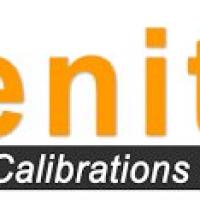Bob
posted a blog.
Calibration of insulation testers is essential to ensure their accuracy and reliability when measuring electrical insulation resistance. At Zenith Sales & Calibration, the process typically involves the following steps:
________________________________________
1. Pre-Calibration Inspection
• Visual Inspection: The insulation tester is checked for physical damage, loose connections, or other visible defects.
• Battery and Power Supply: The tester's battery or power supply is verified to ensure it operates within its rated capacity.
• Basic Functionality Check: Before calibration, basic operations (such as power-on self-tests) are performed to confirm the tester functions correctly.
________________________________________
2. Environmental Setup
• Controlled Environment: Calibration is carried out in a controlled environment with stable temperature and humidity, as these factors can affect readings.
• Standards Compliance: Zenith ensures the environment meets standards such as ISO/IEC 17025, which governs calibration procedures.
________________________________________
3. Reference Equipment
• Standard Resistors: High-precision resistors with known resistance values are used to validate the insulation tester's accuracy.
• Calibrated Instruments: The reference equipment used for calibration is traceable to national or international standards.
________________________________________
4. Calibration Procedure
• Baseline Reading: The insulation tester's output is compared against the reference values of the standard resistors.
• Voltage Output Verification: The test voltages (e.g., 500V, 1000V, 2500V) are measured to ensure they fall within the specified tolerance levels.
• Resistance Measurements: The tester is connected to the standard resistors, and its readings are compared to expected values across its range (e.g., 10 M?, 100 M?, 1 G?).
• Multiple Tests: The procedure is repeated multiple times to verify consistency and identify any deviations.
________________________________________
5. Adjustment (If Necessary)
• If the tester’s readings deviate beyond acceptable limits:
o Software Adjustments: Internal calibration settings may be adjusted.
o Component Replacement: If hardware faults are detected, defective components are replaced.
________________________________________
6. Post-Calibration Verification
• Final Check: After adjustments, the tester is re-evaluated to ensure it meets accuracy specifications.
• Report Generation: A calibration certificate is issued, detailing:
o Equipment ID and model
o Reference standards used
o Measured results and tolerances
o Calibration date and due date for next calibration
________________________________________
7. Documentation and Compliance
• Zenith maintains detailed records of the calibration process to comply with industry standards and facilitate traceability for future audits or inspections.
________________________________________
This rigorous calibration process ensures that insulation testers provide reliable and accurate measurements, supporting their critical role in electrical safety testing and equipment maintenance.
Be the first person to like this.

